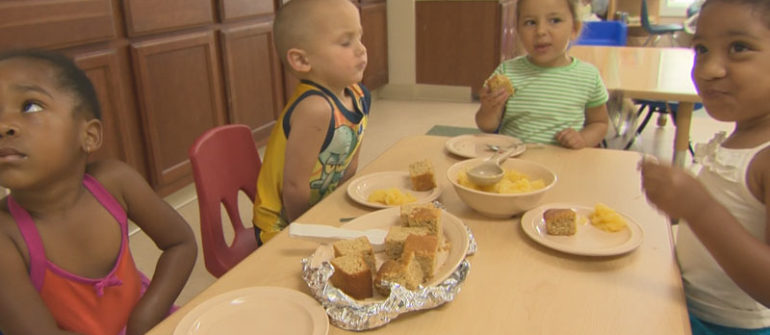Question: How can I tell if something like juice is good for children?
According to Dr. Jim Congleton, DDS MS, a pediatric dentist in practice at New Bern’s Coastal Pediatric Dentistry, misleading food labels are creating a perfect storm for tooth problems, and that storm is called sugar. “A lot of parents are giving kids way too much juice. Advertising leads them to believe there is no sugar in juices and they are good for children. For instance, an apple juice label may say 100% Natural with No Sugar Added. Don’t believe it. Read the nutrition facts: per serving! That’s something parents forget too, that these foods have serving sizes–apple juice has 26 grams of sugar, about 5 teaspoons. And, some are as high as 38 grams, which is 7+ teaspoons of sugar per serving. A container of fast food chocolate milk contains 25 grams of sugar, again, about 5 teaspoons. That’s a lot!
“Along with the amount per serving is the frequency of serving–how many times a day does the child get juice or flavored milk? Many parents fill and refill a sippy cup and the child drinks all day long. That’s as bad as taking a bottle to bed. And, a lot of these kids don’t eat well; they’re never hungry because they’re full of sugary juice.”
Dr. Congleton’s best advice? “Remember, no sugar means no tooth decay. Give kids water or plain milk at meal and snack times and replace juice completely with fresh fruit such as oranges, strawberries, apples, pears, blueberries, peaches, melons and grapes, cut up into small pieces. These are better for small children, providing them with vitamin C as well as fiber, which is good for teeth and the digestive system. Avoid raisins because they are gooey and stick to the teeth.”
Parents still confused about reading labels? Advise them to try Dr. Congleton’s tip: Every time they read a food label for sugar, hold up their hand and count 5 fingers to remind them that 5 grams of sugar equals 1 teaspoon.
We want to know what’s on your mind. To ask your anonymous question, click here.





